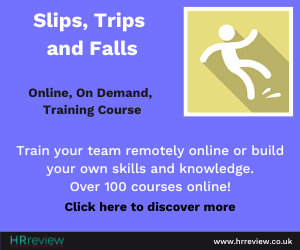It is widely accepted nowadays that emotional wellbeing is a must for effective performance and is no longer a taboo subject. However, at the same time, that doesn’t mean that the space is open or encouraged for everyone to break into a box of tissues at work. So, what is the balance between talking about emotions openly at work and yet using it to elevate rather than hinder performance?
Emotional health forms part of the World Health Organisations definition of health: health is mental, emotional, and physical wellbeing. When any of these three factors are less than optimal, it creates a distraction of some kind and ultimately an inability to focus, less productivity, poorer communication and creativity. It impacts on relationships, both personal and professional, on decision making, and on overall performance. If emotional health is poor, this will have an impact on the other areas of health – both mental and physical. These consequences can include poor sleep, headaches, fatigue, brain-fog, and illness that can range from sore throats and colds through to more chronic serious illnesses.
So, what exactly is emotional health?
It is the ability to handle and express your emotions. It includes how you feel and cope with positive and negative emotions and starts with self-awareness of one’s emotions as a foundation. In order to be emotionally healthy, this doesn’t mean that everything in life is going well; it does however mean that you have the ability to deal with what comes up. Emotional health is in part emotional intelligence: the ability to recognise, express and regulate emotions, all of which are learnable skills, but it is also mindset and attitude so that you come out thriving. If you consider working on mindset and attitude as something that can be developed, then these are also skills that can be fortified. The following steps will show you how:
Emotional Intelligence RULER Model:
- Recognise: emotions in fact simply fragments of data. These fragments are processed by each individual differently, and depending on past experiences and learned behaviours, these emotions will evoke a feeling. In order to be emotionally healthy, it is important to view emotions with a scientific hat rather than that of a judge. In other words, no emotion is good or bad, not right or wrong. It simply is, and you as the individual have the ability to determine what to do with the data you are experiencing.
One way of doing this is to regularly check in with yourself and each other. Ask yourself several times a day “how am I feeling?” This creates an awareness kit to bring your subconscious (just getting on with the day as best as you can) into your conscious (‘what can I do to perform at my best today and eliminate what might be hindering that?’)
If you feel stuck, there are several visual tools and emotional maps available online to prompt a discussion both with yourself and each other. You could start off your workday or kick-off a meeting with everyone expressing an emotion they are experiencing. Some emotions will be more beneficial than others depending on the task at hand, so this practice could extend to giving everyone in the room time to regulate their emotions to be at the optimal for what needs to happen. More on that later.
The more you plot your emotional state throughout the day, the more data you will have about what can trigger emotional states for you and the impact they have on you. Likewise, the faster you will reap the benefits of emotional health.
- Understand: if you appreciate that emotions are simply fragments of information that trigger feelings, the next step is to understand why you are experiencing a particular emotion. Detaching from the cause can be very useful here.
For example, if you feel frustrated and identify that this has been triggered by a team member who hasn’t met a deadline, you may be tempted to vent or confront your team member from this heightened emotional state. The first instinct is to lay the blame outside of yourself. In fact, when it comes to emotional health, this is the worst thing you can do, because all it does is give power to the stressor. A stressor being something you have no control over. In order to experience less stress, you need to create control, or at least attach to something you can control within a stressful situation. The thing that you can control is your own emotion.
By taking time to understand where and why you are experiencing the emotion without any sense of blame – simply viewing it as an interesting piece of information with which you can decide what to do – it allows for curiosity and openness, rather than judgement, and so is a tool for emotional health. Likewise, taking the time to understand the circumstances of those around you, can downplay the initial stress you may have experienced. Perhaps your teammate had personal circumstances that led to them underperforming. If you knew this would compassion for them have helped you with your own emotions? This is a term called re-framing and is a very powerful mindset tool to help reduce stress.
Identifying the trigger to the emotions is very useful to help shift from that state if it isn’t a beneficial one. For example, if you are tired and grumpy, it may mean a power nap is in order. If you are ‘hangry’, it may mean you need to eat and drink something as a means of regulation.
- Label: putting a name to an emotion creates a universal language. In fact, there are thousands of words to describe difference emotional states, and in some languages, several words to describe just one emotion alone.
How many times do you hear people respond “I’m fine” when you ask them how they feel? Well did you know that ‘fine’ is not an emotion at all. To get the best out of each other and bring emotional awareness into the workplace, see if you can dig a little deeper to really label how you are feeling.
One useful way to consider this can be based on energy and pleasantness. For example, if you are high energy and low pleasantness – chances are you may label yourself as feeling stressed, frustrated, or angry. High energy and pleasant might include emotions such as happy, enthusiastic, or excited. High pleasantness and low energy may be calm, relaxed, mellow; and low energy and pleasantness may include sad, melancholy, or depressed.
Creating an extensive foundation of vocabulary helps to facilitate a platform for rich open, diverse, conversations, which in turn creates trust and connection, all of which enhance performance in the workplace.
- Express: this is potentially the most challenging step. Historically, it certainly was for me. When people would ask me how I felt, I could actually feel my throat clog up. This step includes being able to tell people how you feel and why, but also what you want to happen next and what you need from others right now. It is these latter two that truly help to alleviate stress, improve health, increase trust and connection, and enhance performance on all levels. These make up the foundations for setting boundaries to optimise your emotional wellbeing.
When telling people why you feel the way you do, it’s important not to attach blame to the other person and own your own feelings. True, someone’s behaviour may have led to you feeling a certain way, but it is still your feelings, Own them. It is your values or beliefs that have been triggered to cause stress, in just the same way as someone paying you a compliment or saying how they appreciate you may trigger an emotion of happiness.
How can you do this? It’s all in the small print! An example may be a scenario where you are feeling stressed because there is a deadline on a joint project and yet one colleague isn’t pulling their weight. You are unlikely to be able to gain traction if you create a conflict and accuse the other person. Understanding as opposed to judgement will help in regulating emotions here, understanding there could be reasons other than that person being inconsiderate. However, your frustration may be that your values of respect, hard work and professionalism are being triggered.
In order to communicate this effectively, it may sound something like “when you don’t show up to a meeting and complete your assigned tasks, I feel frustrated because my own personal burden is increased, which in turn has an impact on all my other projects and responsibilities outside of work.” Notice how in this example, you won your feeling, but still make it clear the other persons behaviour is unacceptable.
When explaining what you want to happen next – take some time to consider this rather than react. Dig deep and determine what it is that is going to make you feel better. So often I see people neglect this key element that is paramount to self-care. They fail to honour their needs by entering themselves into the equation, and simply accept a stressful situation rather than consider how to shift out of it. When you give yourself power, you don’t have to react to situations such as hand in your resignation because it all gets too much. Instead, you can respond by taking some time to consider what it is you want to happen and valuing yourself enough to believe that you also deserve and are worthy enough for something better to happen. A few calming deep breaths is enough to start off this tough process.
What do you need from others right now? Again – this piece is so often neglected when people fail to set clear boundaries for themselves. People worry about seeming vulnerable or weak if they express their needs, and even more so if those needs are rejected. I encourage you to be strong and the more you practice this piece, the more energy you will have longer term. What is it that you need from the other person and why? Perhaps you need them to take the lead so you can concentrate on a project that needs your expertise more? Do you need someone to cut you some slack? If so, tell them why; possibly you need to be left alone to focus, or communicated with better so that you yourself can be more productive and perform better.
By not blaming the other person for your emotions, you are much more likely to be successful in getting buy-in in having them want to honour your needs and reduce your stress in the process. Changing self-talk from thinking that expressing vulnerability and needs is weak, to it in fact being something powerful is a great mindset tool.
- Regulate: every emotional response is unique, and this skill is about putting the words into action. Regulation strategies will depend on the situation and emotions involved and there are far too many to cover in the confines of this article. There is no right way to regulate, and each strategy will vary from individual to individual. It may be something as simple as breathing, looking out of the window or at a happy picture, stepping out into nature, ‘silently’ screaming, jumping around, listening to music, tapping into your best self, mentally detaching, walking and reframing. Find what works for you in what situations and practice regularly to form a habit.
Key implementation strategies to enhancing emotional health in the workplace culture:
- See emotions as data points from which to learn and grow, NOT signs of weakness.
- Encourage a team approach to identifying and labelling emotions openly to each other and with curiosity.
- Collaborate with each other to co-regulate emotions that enhance the performance needed at a particular time for a particular task.
- Start using words other than ‘fine’ and dig deeper.
- Approach both your emotions and others as a scientist – with curiosity rather than judgement.
- Practice compassion and reframing to de-power emotional triggers from other people.
- Take responsibility for your emotions but understand what it is about other people or circumstances that may trigger them.
- Change any negative self-talk to positive.
- Shift any belief that expressing emotions makes you weak or vulnerable, to a belief that vulnerability increases trust, performance and makes you stronger.
- Determine what you want and need, implement boundaries to make that happen and be brave enough to express your wants and needs.
The more you practice and implement a culture using these strategies, the more resilience you will build to cope with any potential stressful circumstances. It requires dedication and practice but once you master these and they become habits and integrated as culture, you will enjoy far more emotional health.
Dr Rana Al-Falaki
Dr. Rana Al-Falaki, BDS, MFDS, MCD, MRD, CPC, ELI-MP, PCC, is a seasoned optimal performance strategist, health sector pioneer with over 20 years of experience, multi-award-winning business owner, executive & leadership coach, speaker, researcher, visiting professor, and best-selling author. Specialising in empowerment, happiness, stress management, behaviour change, leadership, and work-life balance, she founded 'Nail-It – Achieve The Ultimate' to assist executives, professionals, and business owners in achieving sustainable improvements for optimal performance in life, career, health, relationships, and happiness.











